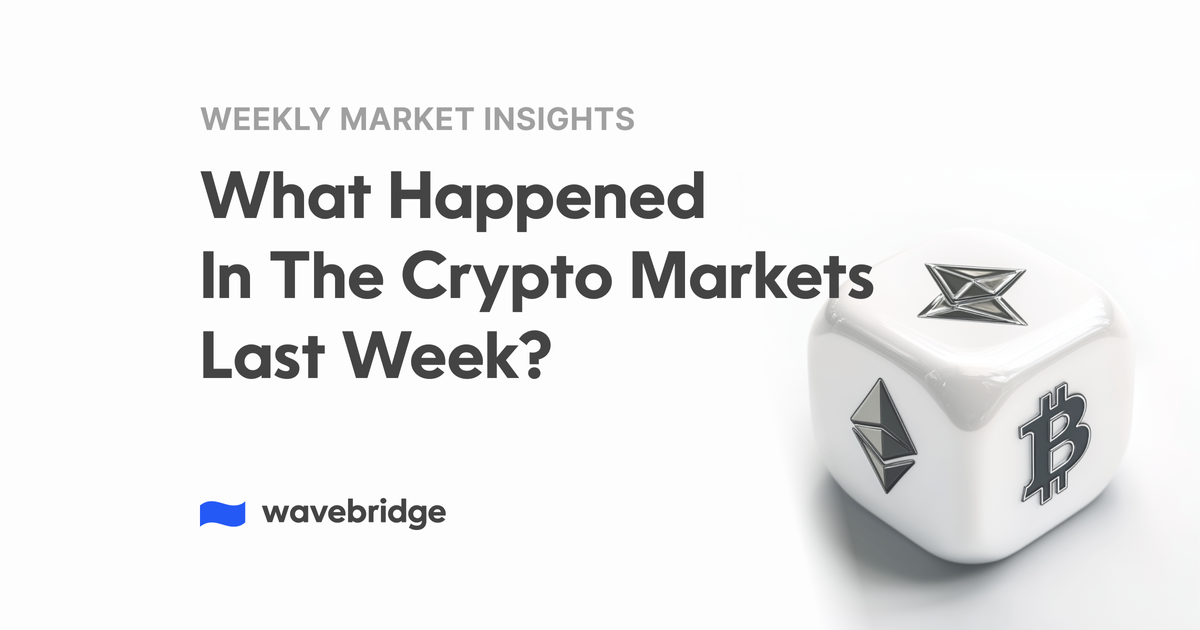Market Insights: Apr 2025 | Week3

Wavebridge Research/
Bitcoin Market Dominance, Institutional Moves, and On-Chain Activity Surge
Bitcoin's market capitalization share of the total cryptocurrency market has reached 64%, the highest since early 2021, and its dominance is 69% when stablecoins are excluded. In 2015, one bitcoin was worth about one ounce of gold, but today the price of bitcoin has surged to $84,000, significantly outpacing gold, NewsBTC reported. Over the same period, gold has risen about 156%, while bitcoin is up more than 13,693%. With Bitcoin's “buy spot-sell futures” arbitrage strategy yielding about 2%, lower than the yield on U.S. Treasuries, institutional investors are moving into Treasuries or MMFs, which offer lower risk and higher returns, CoinDesk said. Transaction costs on the Bitcoin and Ethereum blockchains have dropped significantly in recent years, with the average Bitcoin fee at around $0.913, down sharply from $16 shortly after the halving in April last year, and Ethereum fees falling by more than 92%, from $4.03 to $0.31. Abraxas Capital, a London, U.K.-based investment firm, said it bought 2,949 bitcoins in the last four days, and LookOnChain said it bought $45 million worth of them on Binance. Short-term holders who bought in the last three to six months are moving about 170,000 BTC on-chain, the largest amount since late 2021, according to CryptoQuant, and such large-scale moves are historically a precursor to strong price movements. Bitcoin network hashrate reached a record high in early April, but miners are increasingly selling Bitcoin in response to declining profitability, with mining revenues falling by about 50% in March to around $1.2 billion. Bitcoin staking protocol Babylon saw TVL drop 32% due to massive unstaking, with one address holding $1.1 billion worth of Bitcoin. Bitcoin holdings by publicly traded companies worldwide increased 16.1% quarter-over-quarter to 688,000 in the first quarter of this year, according to asset manager Bitwise, with 95,431 additional bitcoins purchased during the quarter. Japan's MetaPlanet recently bought another 319 BTC, bringing its cumulative holdings to 4,525 BTC, with a goal of holding 10,000 BTC by the end of 2025 and 21,000 BTC by the end of 2026. Meanwhile, Bitcoin's public miners sold more than 40% of their mining capacity in March, according to Bitcoin.com, as they deal with financial pressures from low hash prices and rising operating costs.
Ethereum Upgrades and TRON ETF Innovation
Cannery Capital filed with the U.S. Securities and Exchange Commission to become the first exchange traded fund in the U.S. to include TRON staking, a structure designed to make digital assets more accessible to traditional financial investors by tracking the spot price of TRON while offering staking rewards. Meanwhile, Ethereum has announced two major upgrades this year, Pectra in May and Pusaka later in the year, but despite technical advancements such as increased data processing capacity and layer 2 support, some have argued that they will not ease investor concerns about the existing tokenomics.
U.S. State and Federal Digital Asset Policy Developments
The U.S. state of Arizona passed a digital asset bill that allows the state to invest up to 10% of its annual budget in digital assets, including Bitcoin, Ethereum, stablecoins, and NFTs, in what is believed to be the first attempt to establish a “state digital asset reserve” in the United States. The Oregon Attorney General filed a lawsuit against Coinbase for operating an unregistered securities platform and offering unregistered staking services, while market maker DWF Labs invested $25 million in Donald Trump's family-led DeFi project World Liberty Financial to gain a governance stake in WLFI and participate in liquidity provision for the USD1 stablecoin ecosystem. In the U.S. territory of Northern Mariana Islands, the governor vetoed a bill that would have allowed the issuance of a stablecoin on the island of Tinian, while Bo Hines, director of the President's Digital Asset Advisory Council, formalized a policy of strategic Bitcoin stockpiling, saying in a White House interview that Bitcoin will play a similar role to gold in the long term. Meanwhile, New York State Attorney General Letitia James called for legislation in Congress to prohibit U.S. pension funds from investing in digital assets or ETFs that track them, arguing that they have no intrinsic value, and Standard Chartered predicted that the supply of stablecoins could increase nearly tenfold to $2 trillion by 2028 if the U.S. Stablecoin Act (GENIUS Act) is passed this year.
Latin America's Crypto Trends and Global Regulatory Shifts
In 2024, Latin American users bought more XRP than Ethereum, Solana, and Dogecoin, and in Mexico, XRP was the third most favored asset behind Bitcoin and stablecoins with a 10% share, according to Bitso. Binance recently mandated KYC (know-your-customer) recertification for all users in India in response to stricter anti-money laundering (AML) regulations, requiring both new and existing users to complete a process that includes submitting a PAN (permanent account number) in order to comply with local AML regulations and enhance user data security. Meanwhile, the European Central Bank (ECB) is strongly pushing ahead with the introduction of a digital euro (CBDC) and is on track to launch by October 2025. The ECB emphasizes that the digital euro will be a transformational turning point for Europe's financial infrastructure, and is currently working on key tasks such as technical design and regulatory frameworks.
